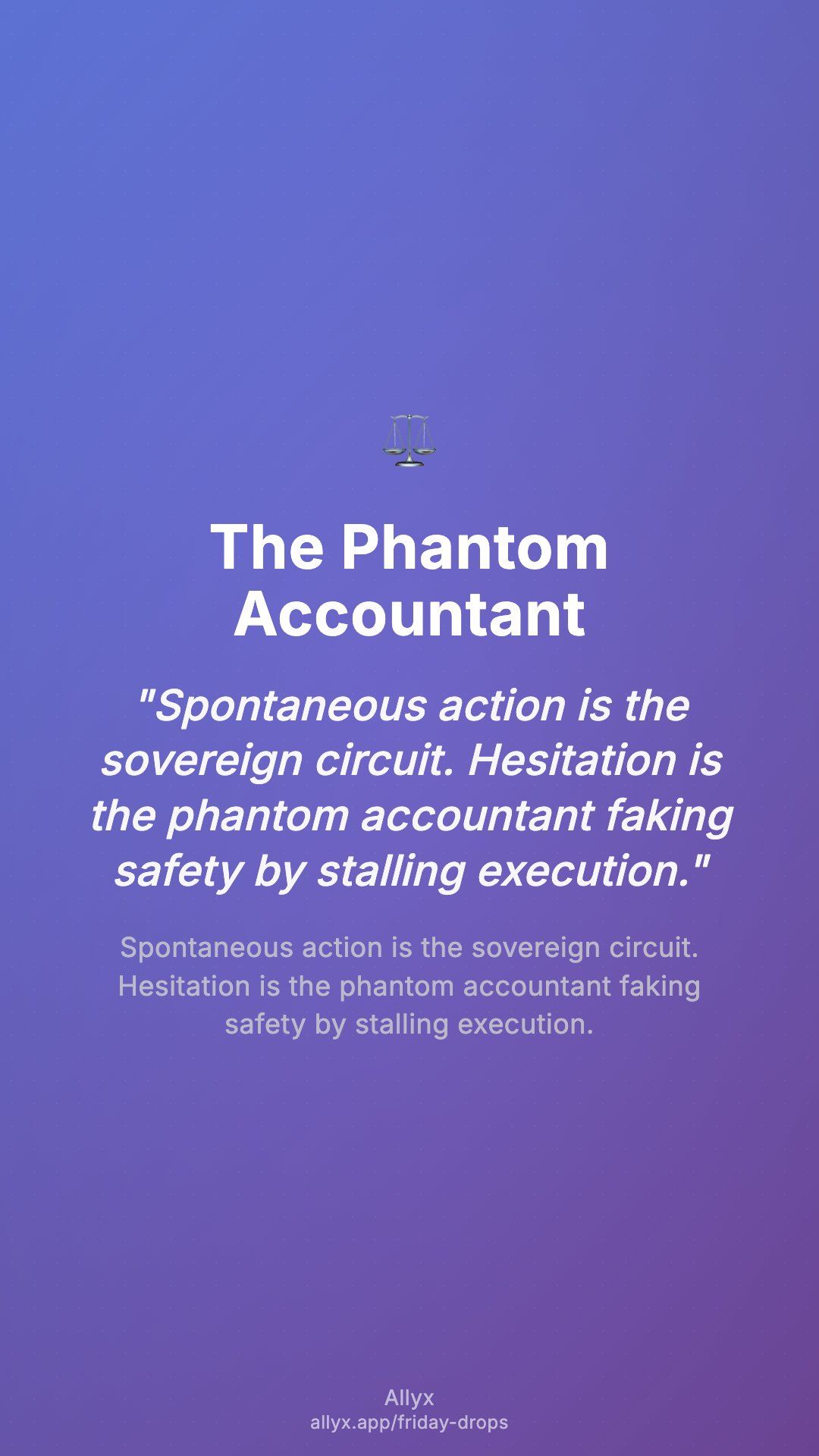The Phantom Accountant
Spontaneous action is the sovereign circuit. Hesitation is the phantom accountant faking safety by stalling execution.
Friday, September 26, 2025
Metaphorical Narrative
Imagine standing at the edge of a wide-open road. The light turns green.
One path is clean — your foot presses the pedal, the car moves, the world opens.
The other is tangled — a phantom accountant leans over your shoulder, muttering about possible tolls, possible fines, imaginary debts. He clutches your arm, hesitating over ghosts of gain and loss. The road is clear, but the car never moves.
Core Insight
Spontaneity runs on the brain’s sovereign circuit — striatum, motor cortex, and a steady prefrontal guide. This circuit is fast, fluid, and rooted in presence. It trusts execution and lets the body act without imaginary negotiations.
Hesitation activates a very different loop. The default mode network (DMN) spins scenarios, the anterior cingulate cortex raises false conflicts, and the amygdala/insula paint the body with stress tones. This loop masquerades as responsibility, but it is really a phantom accountant — stalling action under the illusion of careful protection.
Saturday Experiment
Today, spot when the phantom accountant shows up.
When you feel hesitation over imaginary gains, say: “We are not bargaining today.”
Act anyway — let the sovereign circuit move your body without debate.
Sunday Reflection
- When did spontaneity feel like a sovereign act, free from imaginary negotiation?
- How did hesitation appear — what “phantom debts” did it invent?
- How would the third-person “Observer” describe the difference between the car that drove and the one that never left the green light?

